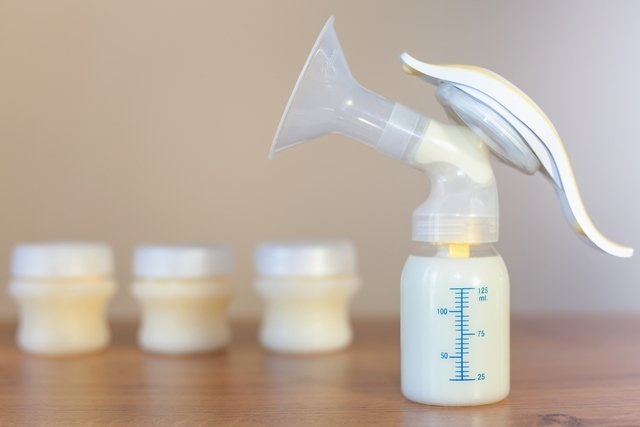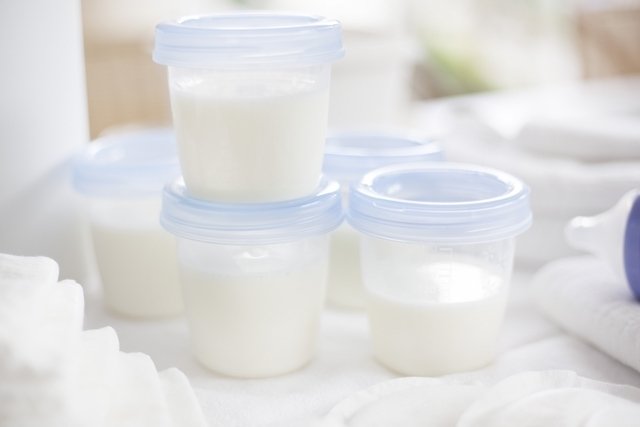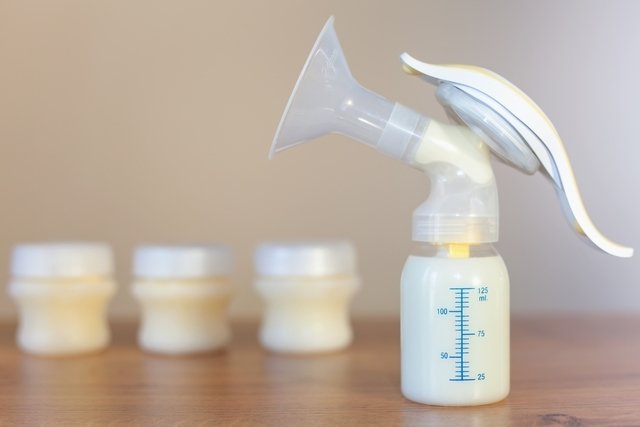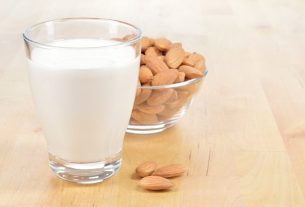Donating breast milk can be done by any healthy woman who is not taking medications that are incompatible with breastfeeding. To do this, simply collect the milk at home and then contact the nearest human milk bank to make the donation.
Milk production depends on the emptying of the breasts, so the more a woman breastfeeds or expresses milk, the more milk she produces, which is enough for her baby and for donation. Donated milk is used in hospitals to feed babies admitted to neonatal units and who cannot be breastfed by their own mother.
Any amount of donated breast milk is important. A jar of donated breast milk can feed up to 10 babies a day. Depending on the baby’s weight, just 1 mL of milk may be enough to keep him well nourished during a meal.

Step by step to donate breast milk
The woman who will donate breast milk must respect some important recommendations:
1. Prepare the donation bottle
Not just any bottle can be used to store breast milk. Only bottles provided by the human milk bank or glass bottles with plastic lids, such as instant coffee bottles, are accepted, as long as they are properly sanitized at home. Cleaning and sterilizing bottles at home is relatively easy and should be done as follows:
- Wash a glass jar with a wide mouth and a plastic lidsuch as instant coffee, removing the label and paper from inside the lid;
- Place the jar and lid in a pan of watercovering them completely;
- Boil them for 15 minutescounting the time from the start of boiling;
- Drain the bottle and lid with the opening facing downon a clean cloth, until dry;
- Close the bottle without touching the inside of the lid with your hands;
The ideal is to leave several jars prepared and sterilized, which can be stored in a container with a lid.
2. Perform personal hygiene
Women’s hygiene is also very important to avoid contamination of the milk to be donated. Therefore you must:
- Wash your breasts with water only and dry them with a clean towel;
- Wash your hands up to the elbowwith soap and water, drying with a clean towel;
- Wear a cap or a scarf to cover your hair;
- Avoid talking while expressing milk or place a protective mask or cloth diaper over your nose and mouth.
3. Express milk manually
To start expressing the milk, the woman must be in a calm and peaceful place, which favors the removal of milk. Thinking about the baby can help with milk flow, due to the stimulation of oxytocin, the hormone responsible for releasing breast milk.
To begin expressing breast milk, a woman must:
- Choose a clean and quiet place;
- Sit on a comfortable chair or sofa;
- Massage the breasts with your fingertips, making circular movements towards the dark part (areola), towards the body.
- Hold the breast appropriately, placing your thumb above the line where the areola ends, and your index and middle fingers below the areola;
- Firm your fingers and push back, towards the body;
- Press your thumb against the other fingers until milk comes out;
- Discard the first jets of milk or drops;
- Remove the milk from the breast, positioning the bottle under the areola;
- Remove milk until the breast is completely empty and more malleable;
- Close the bottle tightly with the lid;
- Place a label with the name and date of withdrawal. Afterwards, place the bottle in the freezer or freezer for a maximum of 10 days.
See also how to express milk with a pump.
The bottle can be filled up to 2 fingers from the edge and it is also possible to use the same bottle for different collections. To do this, you must place the removed milk in a glass cup, properly sterilized, and then simply add it to the bottle of milk that is already frozen.
If there is any difficulty during milk expression, the woman can contact the human milk bank or a Basic Health Unit.

Where to store breast milk
The collected milk must be kept in the freezer or in the refrigerator freezer for a maximum of 10 days. Even adding milk from different days, the day of the first milk withdrawal must be taken into account.
Within this period, the woman should contact the nearest human milk bank or find out how to transport it. In some cases, it may also be possible for milk to be collected at home.
When is the right time to express milk for donation?
The woman can start expressing milk for donation from the birth of the baby, right after each feeding. To do this, you must let the baby breastfeed as much as he wants, and when he is satisfied, remove the remaining milk from the breast to donate.
Benefits of donating breast milk
Donating breast milk is very important, as 1 liter of donated milk can feed more than 10 hospitalized babies, depending on their weight. This milk can bring several benefits to hospitalized babies, such as:
- Increase the chances of recovering faster;
- Ensure that they develop healthily;
- Stimulate natural protection against infections, diarrhea and allergies;
- Reduce the risk of developing overweight, obesity or type 2 diabetes in the future.
For the woman who makes the donation, there are also other benefits such as reducing the chances of developing breast cancer and increasing breast milk production, which occurs due to the frequent encouragement of emptying the breast completely after each feeding.
How to start donating breast milk
When a woman decides to donate her breast milk, she must contact the human milk bank closest to her home or call Dial Saúde 136 because registration must first be carried out.
After scheduling a visit from the milk bank team, the technicians personally explain how to carry out the collection correctly to avoid contamination, and check the prenatal exams that confirm the woman’s health, in relation to diseases that prevent the donation of milk. milk.
The milk bank also offers masks, caps and glass bottles to make donations in a hygienic way.
At the human milk bank, breast milk undergoes rigorous tests to ensure that there has been no contamination, and once approved, it can be distributed to hospitals where it will be used in neonatal units.
When you cannot donate breast milk
The woman should not breastfeed her baby, nor express breast milk to donate, in the following cases:
- If you are sick, as prescribed by your doctor;
- If you are taking any medication. Find out which medicines are prohibited during breastfeeding
- If you are infected with serious disease viruses such as HIV;
- If you have consumed drugs or alcoholic beverages;
- After having an episode of vomiting or diarrhea, because you may be sick and need medical help.
In these situations, women should not donate milk so as not to harm the health of the baby who will receive inappropriate milk.

Sign up for our newsletter and stay up to date with exclusive news
that can transform your routine!
Warning: Undefined array key "title" in /home/storelat/public_html/wp-content/plugins/link-whisper-premium/templates/frontend/related-posts.php on line 12
Warning: Undefined array key "title_tag" in /home/storelat/public_html/wp-content/plugins/link-whisper-premium/templates/frontend/related-posts.php on line 13




